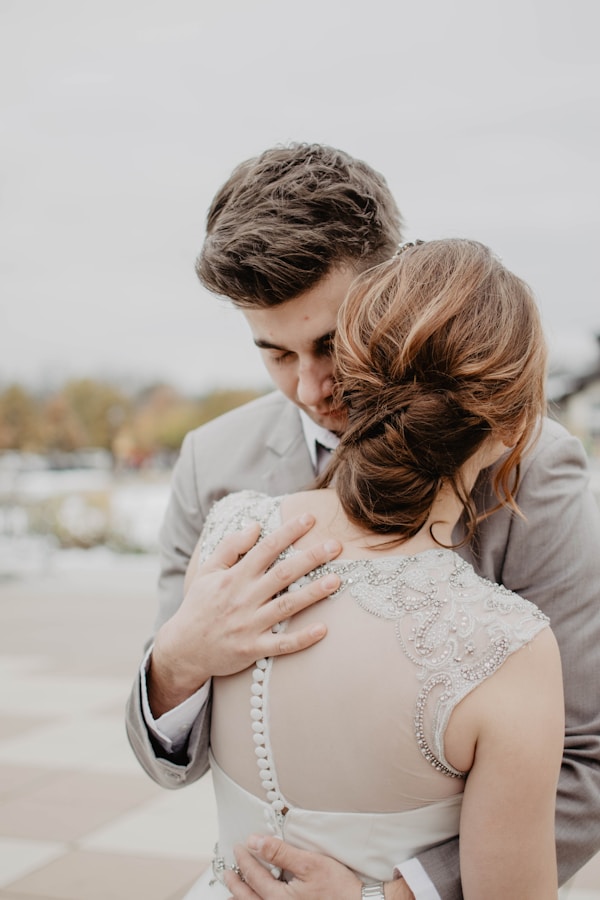Unveiling the Art of Wedding Dress Design: Techniques for Creating a Detachable Overskirt
Unveiling the Art of Wedding Dress Design: Techniques for Creating a Detachable Overskirt
Exploring the Techniques Behind Detachable Overskirts in Wedding dresses
Wedding dresses have always been a topic of great interest in the fashion world, and one of the most innovative trends is the detachable overskirt. This unique design allows brides to transition seamlessly between various looks on their special day. But what techniques are employed in the creation of these stunning garments? In this article, we will delve into the various methods used to design and construct a wedding dress with a detachable overskirt, as well as explore additional questions brides-to-be might have regarding this exquisite fashion choice.
The Evolution of Wedding Dress Design
The history of wedding dress design has evolved dramatically over the centuries, influenced by cultural, social, and technological changes. Today’s trends reflect a blend of tradition and modernity, with detachable overskirts standing out as a versatile option. This design element allows brides to enjoy the glamour of a full skirt during ceremonies and then easily transition to a more streamlined silhouette for the reception or dancing.
Key Techniques in Designing a Wedding Dress with a Detachable Overskirt
Creating a wedding dress with a detachable overskirt involves several specialized techniques that ensure both aesthetic appeal and functionality. Here are some of the most crucial ones:
| Technique | Description |
| Pattern Making | The foundation of any garment, precise pattern making allows designers to draft the necessary shapes for both the dress and the overskirt. |
| Fabric Choice | Choosing the right fabrics is critical. Lightweight materials like tulle or organza are popular for overskirts, while satin or lace may be chosen for the main dress. |
| Construction Techniques | Understanding sewing techniques that allow for a secure attachment and easy detachment of the overskirt, such as hook-and-eye or snap closures, is essential. |
| Boning and Structure | Incorporating boning into the dress can enhance the overall shape and support the weight of a detachable overskirt. |
| Fitting and Tailoring | Accurate fitting ensures that both the dress and the overskirt align perfectly for a seamless look and comfortable wear. |
| Embellishments | Added detail through lace appliqué, beading, or embroidery can elevate the design and make the transition from ceremony to reception unique. |
Understanding the Importance of Fabric Choices
The selection of fabric plays a critical role in the functionality and aesthetic appeal of a detachable overskirt. Common materials include:
- Tulle: Perfect for a voluminous and ethereal look, tulle provides lightness and a fairy-tale quality.
- Organza: Known for its crispness and sheer quality, organza offers structure as well as draping potential.
- Satin: Offers a luxurious feel, making it ideal for the main body of the wedding dress.
- Lace: Adds texture and detail, often used in overlays or accents to create a stunning visual effect.

Constructing the Detachable Overskirt
Once the design is set, the construction of a detachable overskirt involves several steps. The overskirt should be designed to gracefully attach to the main dress while allowing for easy removal:
- Design and Drafting: Creatively drafting the look of the overskirt, considering its length, silhouette, and fabric to match the dress.
- Cutting and Assembly: Carefully cutting the fabric to the desired shape and assembling it according to the design specifications.
- Attachment Mechanism: Sewing in discreet attachment points, often at the waistline, ensuring it can be securely fastened during the ceremony and easily removed later.
- Finishing Touches: Adding any embellishments or detailing to both the dress and overskirt to enhance the visual appeal.
Common Questions Brides Ask About Detachable Overskirts
As brides explore the option of detachable overskirts, they often have several questions:
- Can I customize the overskirt? Absolutely! Many designers offer customization options to match the individual style and theme of your wedding.
- How do I ensure a proper fit? Working closely with a skilled tailor and scheduling fittings during the design process will help ensure your dress and overskirt fit perfectly.
- Is a detachable overskirt practical? Yes, it allows for versatility throughout your special day, providing a stunning bridal look for the ceremony and a more functional outfit for the reception.
- What’s the price range for a wedding dress with a detachable overskirt? Prices can vary widely based on fabric, designer, and customization, typically ranging from $1,500 to $5,000 or more.
Real-Life Inspirations for Detachable Overskirts
Many celebrities have embraced the detachable overskirt trend in their wedding attire, showcasing its versatility and elegance. For example, Kate Middleton and her stunning Alexander McQueen gown came with an element of detachable opulence, allowing her to switch her look from royal ceremony to evening festivities effortlessly.
Final Thoughts on Choosing Your Perfect Wedding Dress
Choosing a wedding dress is perhaps one of the most significant decisions a bride can make, and the option for a detachable overskirt adds a layer of flexibility and creativity. As you navigate through fabrics, designs, and techniques, remember that the key is to reflect your personal style and comfort. Make sure to communicate openly with your designer about your vision and practical preferences. Ultimately, the goal is to feel beautiful and confident on your special day.
Summary: Creating a wedding dress with a detachable overskirt combines art and practicality, utilizing techniques like pattern making, fabric selection, and tailoring. As you explore this innovative design, remember to embrace your individuality and the memories you wish to create on your wedding day.
